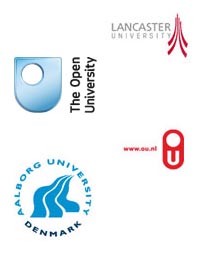

A proposed model of a visual interaction analysis graph for studying educational interactions and their impact on learning within a technology enhanced learning environment
Arkendu Sen, Monash Unversity Sunway Campus, Selangor, Malaysia, Don Passey, Lancaster University, Lancaster, UK
Enhancing educational interactions in collaborative learning within Technology Enhanced Learning Environments (TELE) is a popular approach to engage students in active learning within the Higher education sector globally. These entail providing educational interaction episodes at various time points of a teaching/learning session. Analyses of interactions can explore whether improving student collaborations and interactions do indeed have an impact on learning. Few empirical studies on interaction analyses have been conducted in the context of Technology Enhanced classrooms in Higher education. Tools used currently for analyses of video data of educational interactions yield reports that are either too technical or do not, in themselves, give feedback on the impact of student interactions on learning. In this project, while studying collaborative learning within a Technology Enhanced practical lab, a simple model of an "Interaction Timeline Graph" was developed to sequentially analyse educational interactions over time, so that teachers and students alike might understand these. Content analyses of widely-used video analysis software applications was done. This led to some elements of these software applications to be incorporated in this new model. To further analyze educational impacts of these interactions, elements of a learning framework applied specifically to Technology Enhanced Learning lab have been coded and then incorporated into a further innovative detailed model of the "Visual Interaction and Learning Sequence Graph". Such a model of "Visual Interaction and Learning Sequence Graph" includes three critical segments of colour coded educational interactions in a sequential timeline as well as their representative snapshots along with each of its learning element. While studying learning in a technology enhanced classroom setting, it has much potential in its use, as interactions can be directly related to learning outcomes and summative grades. As this "Visual Interaction and Learning Sequence Graph" is simple and graphic, it can be used as a feedback tool for both the learner as well for facilitators on the effectiveness of interactions. When compared with grades, this model could also be used to expand academic analytics in identifying types of interaction that successful students engage in and those that may influence increased learning effectiveness and higher student performance.
Keywords
Educational interaction analyses, TELE, Interaction quality, Interaction graph, Mapping learning frameworks
| About NLC | Welcome Messages | 2012 Conference Proceedings | Conference Organisation |Invited Speakers |Proceedings Handbook | Past Conference Proceedings | Exploring the Theory, Pedagogy and Practice of Networked Learning |Contact |